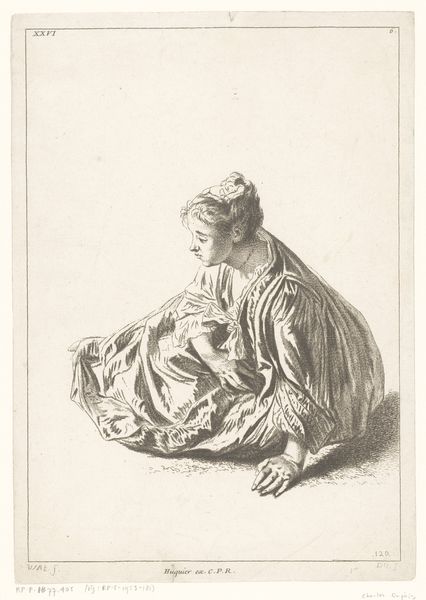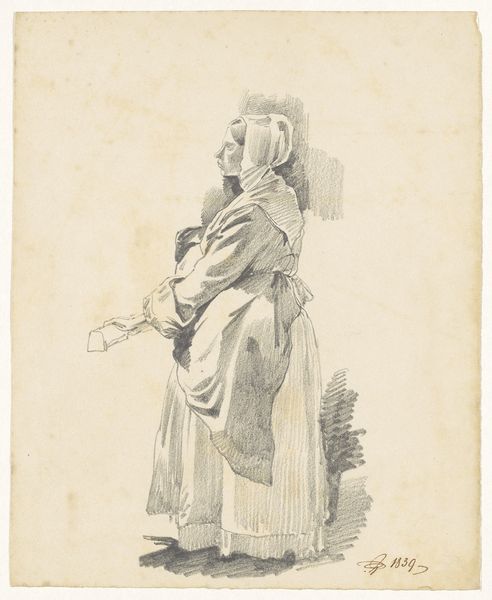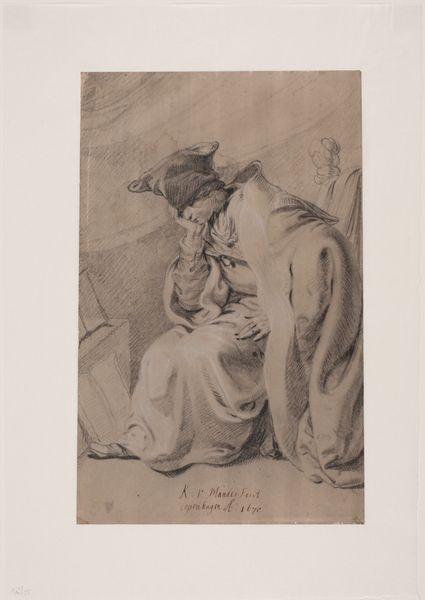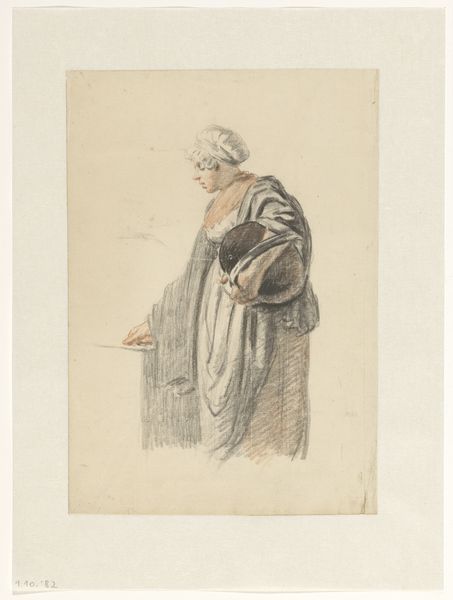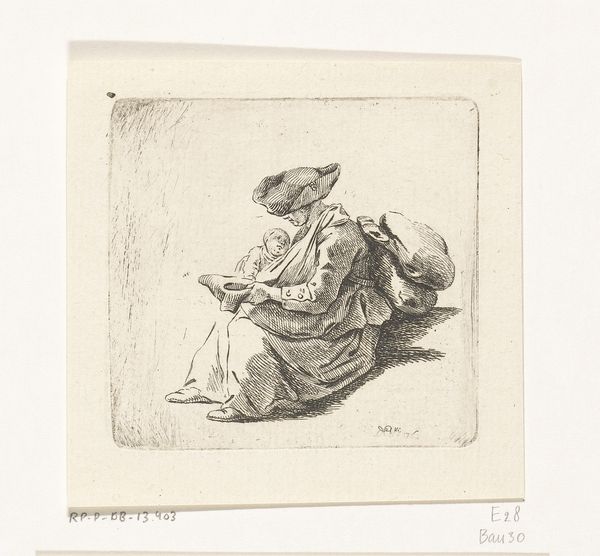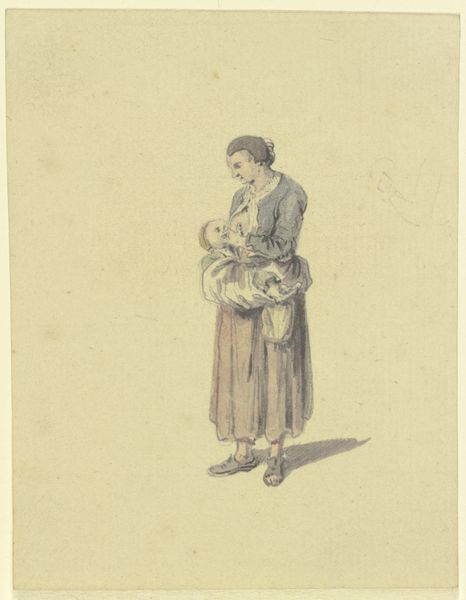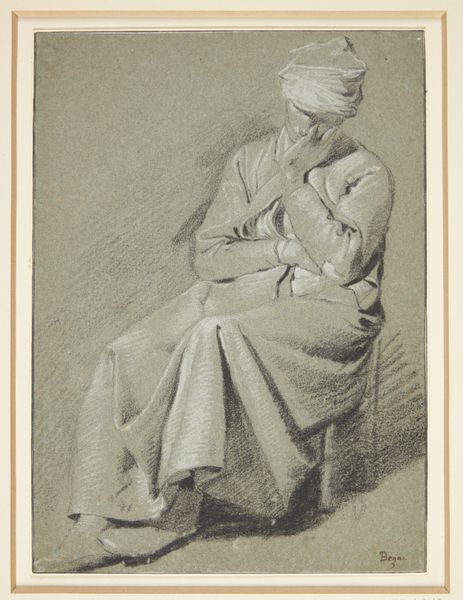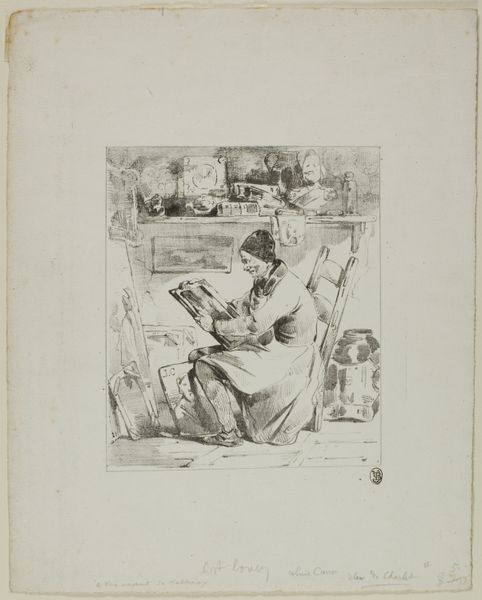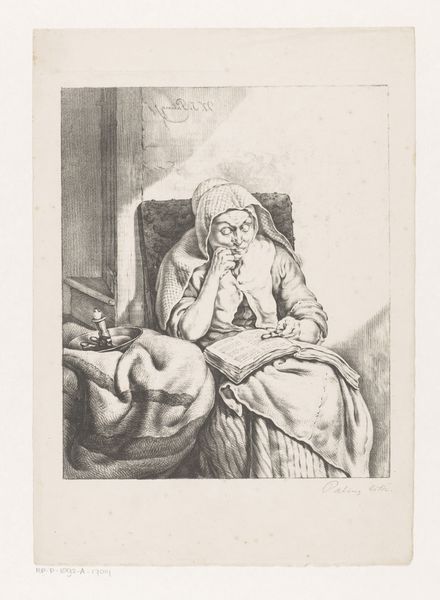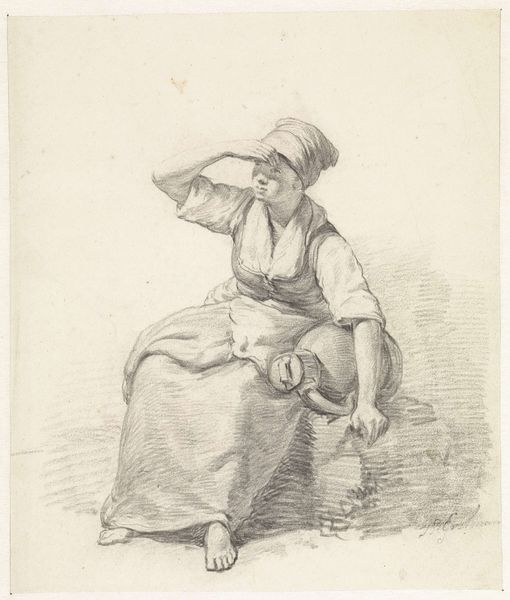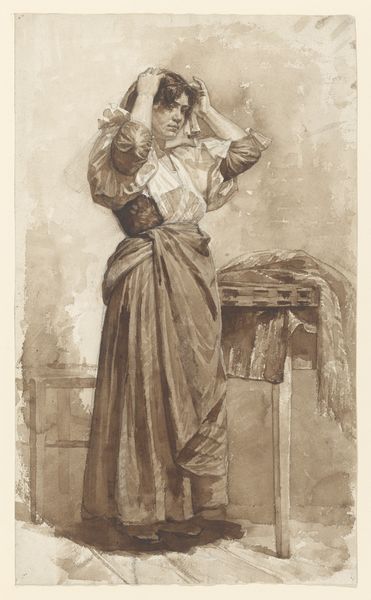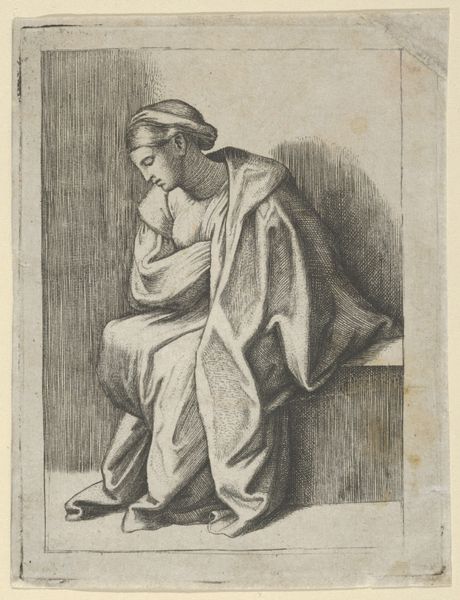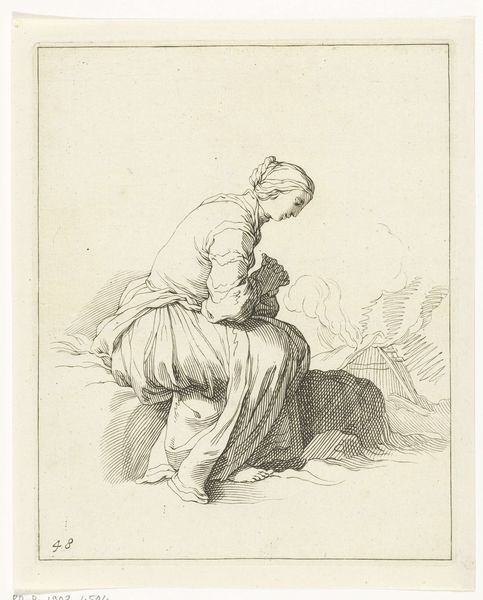
drawing, paper, ink
#
portrait
#
pencil drawn
#
drawing
#
neoclassicism
#
paper
#
ink
#
pencil drawing
#
portrait drawing
#
genre-painting
Dimensions: height 269 mm, width 199 mm
Copyright: Rijks Museum: Open Domain
Curator: Before us is a drawing by Pieter Christoffel Wonder, titled "Zittende vrouw met kan in de hand" – or "Seated woman with a jug in her hand" – which he created sometime between 1790 and 1852 using ink on paper. Editor: My first impression is one of quietude and contemplation. The sepia tones and soft lines give it a serene, almost melancholic feel. There's a timelessness to the image, too, like this scene could exist in almost any era. Curator: The piece is a fascinating example of the Dutch inclination toward genre painting. Notice how Wonder elevates a seemingly mundane subject—a woman simply holding a jug—into a subject worthy of artistic consideration. This resonates with a broader trend in Dutch art history of finding the extraordinary in the ordinary, but I'd be hesitant to make claims beyond a portrait. Editor: I agree it could simply be a portrait study, but that jug she’s holding transforms the whole image. In a classical context, jugs, pitchers, and urns were potent symbols of femininity, domesticity, but also fertility and potential. Does this specific image allude to some cultural undercurrent surrounding women's roles and identities within 18th- or 19th-century Dutch society? Curator: It's plausible. We can see in it a representation of labor. Such imagery was being mobilized as a tool in proto-industrial society to portray certain laboring demographics, most commonly in service jobs. Editor: That’s right; Wonder's focus on the simple, utilitarian jug grounds her and, as you've indicated, perhaps, symbolizes labor in an otherwise very classical, elegant depiction. It is interesting how she's positioned. Does she feel like she’s embodying some sort of classical virtue, while also having this aspect of grounded domesticity through her garb? Curator: Perhaps, and the use of drawing as the medium lends the image a certain intimacy and immediacy, allowing for direct and relatable encounters, devoid of some social function that a history painting may try to convey. It is indeed interesting how Wonder can balance the domestic with this reference to Neoclassicism! Editor: Yes, quite a rich discussion embedded in seemingly simple imagery! Curator: Absolutely. An important artwork with some intriguing background!
Comments
No comments
Be the first to comment and join the conversation on the ultimate creative platform.
